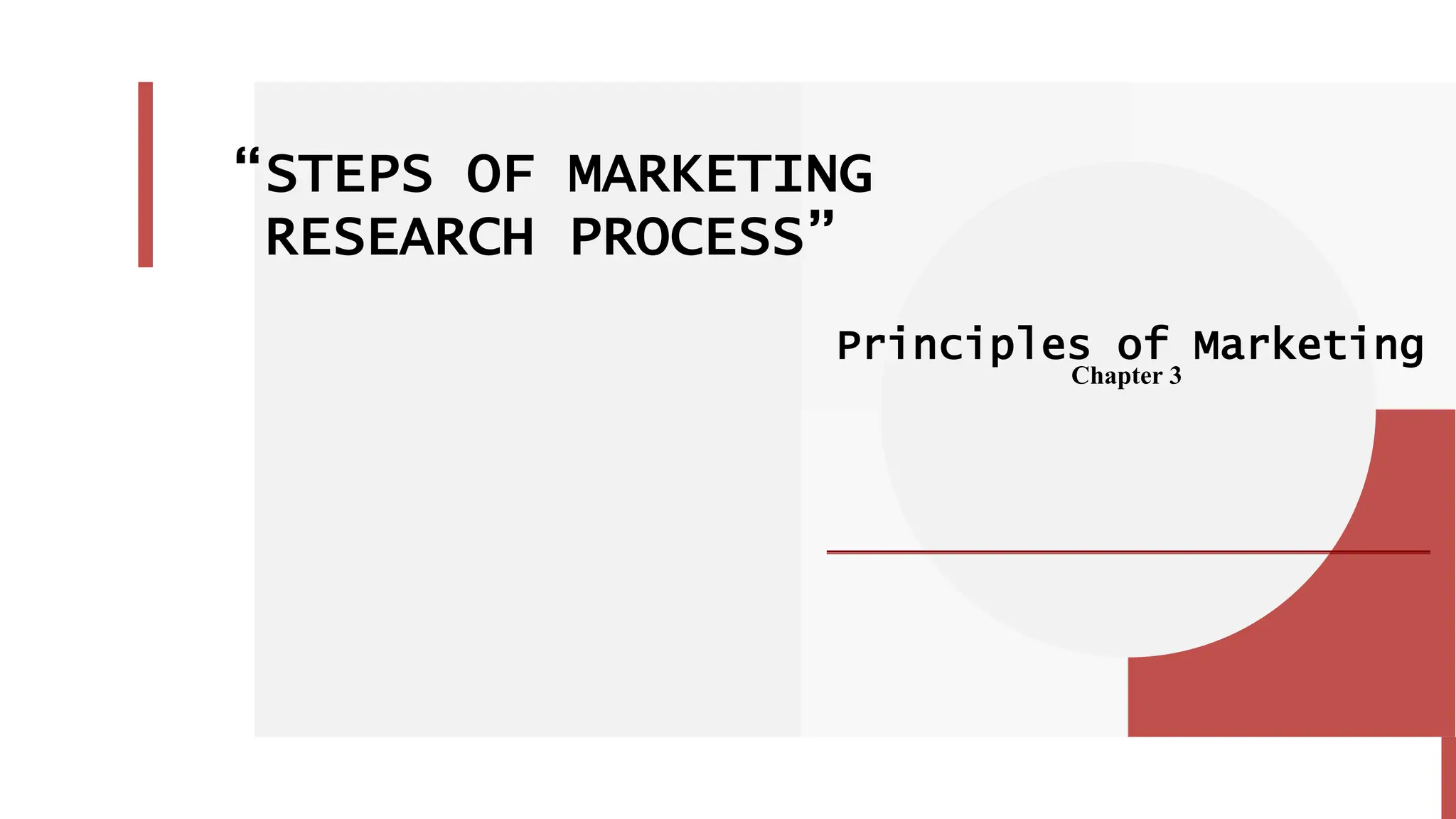The document outlines the steps of the marketing research process. It discusses 8 key steps: 1) determining the need for research, 2) defining the problem/opportunity, 3) establishing research objectives, 4) determining the research design, 5) identifying information sources and types, 6) determining data collection methods, 7) designing data collection forms, and 8) determining sample size and developing a sampling plan. The goal of marketing research is to gather and analyze data relevant to a specific marketing situation to help organizations make better business decisions.































